Chinese strike reconnaissance UAVs and their combat use
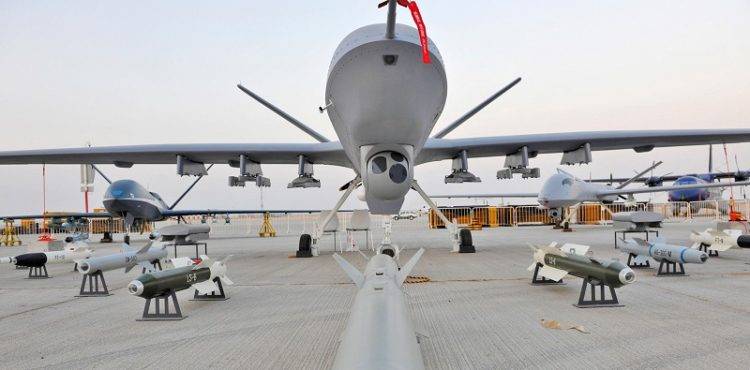
According to American intelligence, in 2000, the People's Liberation Army of China had a little more than 100 reconnaissance drones. Approximately 70% of those available in the troops drones were light vehicles with piston engines designed to conduct reconnaissance in the near rear of the enemy, monitor the battlefield and adjust artillery fire. Reconnaissance at a distance of 200-500 km from the front line was to be carried out by UAVs with turbojet engines ChangKong-1 (copy of La-17) and Wuzhen-5 (copy of AQM-34 Firebee). The development of strike and reconnaissance UAVs in China intensified after the US armed forces began to use the MQ-1990 Predator UAVs in local conflicts in the mid-1s. In the future, these strike and reconnaissance vehicles and the improved MQ-9 Reaper played an important role in the "war on terror" unleashed by the United States. Chinese intelligence very closely followed the course of American campaigns in Afghanistan and the Middle East, and it was quite a logical consequence of this attention that the PLA command wanted to have drones of a similar class in service.
Since the description of all Chinese drones potentially capable of carrying weapon, it will take too much time, we consider only those that are in significant quantities entered service, exported and took part in hostilities.
UAV ASN-229A
The lightest mass-produced Chinese unmanned aerial vehicle capable of carrying guided missiles is the ASN-229A, created by specialists from the Xian Aisheng Technology Group Corporation (ASN UAV). The 365 Research Institute, a division of Xi'an Northwest Polytechnic University, was in the past the main developer of light-class UAVs for the PLA Ground Forces. The corporation produces about 80% of Chinese UAVs. Its experts have designed more than 15 types of unmanned vehicles.
The ASN-229A UAV is the largest unmanned vehicle in the line of drones created by the Chinese corporation, and is designed to replace the ASN-104 / 105 in service. The main tasks of the drone are conducting air reconnaissance, electronic warfare, relaying VHF radio signals and adjusting artillery fire. At the same time, the ASN-229A is capable of delivering point strikes against small-sized and moving targets.
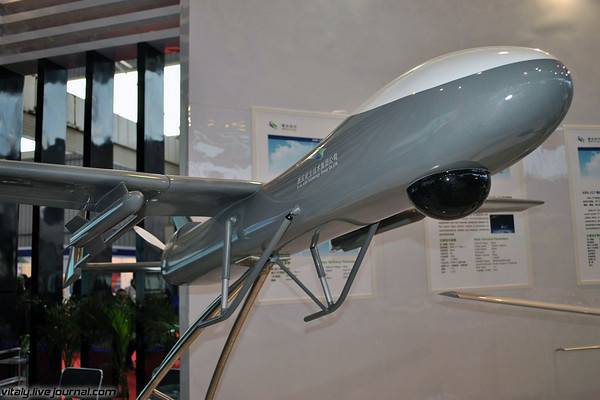
The new army unmanned vehicle is built according to the normal aerodynamic scheme with an upper-wing wing of high relative elongation and has a two-keel plumage. The power plant, located in the rear of the fuselage, includes a piston engine with a two-blade pushing screw. In the nose of the fuselage is an aiming and viewing system with optoelectronic and thermal imaging cameras and a laser rangefinder, target designator. Communication and data exchange equipment provides communication with the control station, both at the line of sight and via the satellite channel. In addition, the device has two underwing suspension units for ATGM AR-1. The UAV is launched from the launch device using solid fuel boosters, and landing by parachute.
Compared with the previous generation army drones, the mass and dimensions of the ASN-229A have increased significantly. Take-off weight reaches 800 kg. Wingspan - 11 m, length - 5,5 m. Payload -100 kg. Flight altitude - up to 8000 m. Maximum speed - 220 km / h, cruising - 160-180 km / h. Flight duration - up to 20 hours
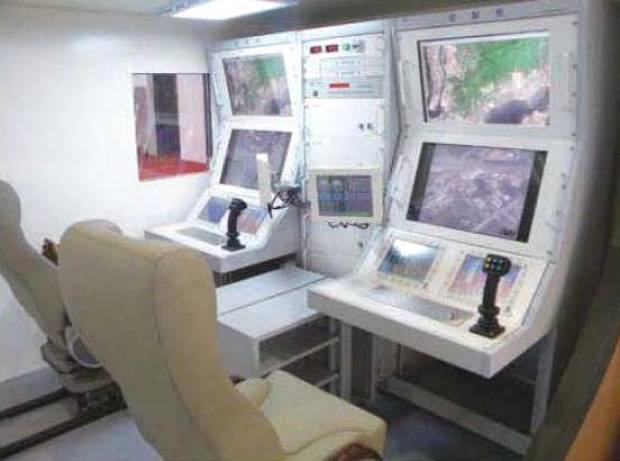
Since the ASN-229A is superior to other Chinese drones in range and time in the air, a new control station mounted on a mobile chassis was created for it. The ASN-229A UAV is used only by the PLA Ground Forces and is not supplied for export.
UAV SN-3A
The first Chinese UAVs, capable of approaching the American Predator in their capabilities, were designed by specialists from the Beijing Aerospace Science and Technology Corporation (CASC). The development of the Cai Hong series of drones began in the middle of the 1990 years. Initially, the Cai Hong ("Rainbow") CH-1 and CH-2 series devices were intended for reconnaissance, surveillance, jamming of enemy communication systems, artillery fire adjustment, use of communication and data transmission systems as a repeater, as well as target designation of tactical missile complexes. But subsequently, on the basis of the CH-3 UAV, the model of which was first presented at the exhibition in Zhuhai in the 2008 year, an impact modification of the CH-3A was created.
The CH-3A UAV is made according to the “duck” scheme, which is rarely used for drones of this size, and is equipped with a piston engine with a pushing screw. Wingspan - 7,9 m, length - 5,1 m, height - 2,4 m. Maximum take-off weight - 640 kg. Payload mass - 100 kg. Cruising speed - 180 km / h. The maximum speed is 240 km / h. The maximum flight altitude is 5 km. Radius - 200 km. Flight range 2000 km. Flight Duration - 12 hours.
Under the fuselage is a gyrostabilized platform with optoelectronic sighting and search equipment. It includes a video camera, a panoramic IR system and a laser rangefinder-target designator. Communication and data exchange equipment provides transmission and reception of control commands only at a line of sight. UAV on-board equipment allows take-off and landing in a fully automatic mode. They are carried out by plane, including from unpaved runways.
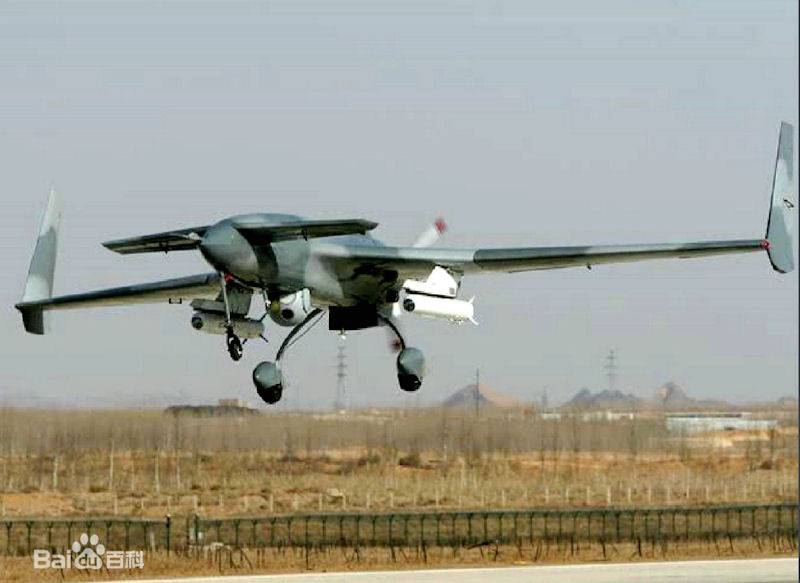
Under the wing there are two nodes of the suspension of guided ammunition. According to Global Security, the new CASC-developed AR-3 laser-guided missiles (weight 1 kg) and small-sized FT-45 guided bombs (weight 25 kg) developed by CASC are used as a combat load on the CH-25 UAV. The CH-3 UAV can also carry two FT-5 bombs of 75 kg caliber (warhead weight - 35 kg, KVO - 3-5 m) with satellite guidance. In addition, a radar station with synthesizing an aperture of the antenna, electronic warfare equipment and radio relay equipment can be installed as a payload.
Although the CH-3A is inferior in its characteristics to the American MQ-1 Predator UAV and cannot be controlled via satellite communication channels, its combat potential is quite high. This type of drones under the designation Rainbow-3 were delivered to Nigeria, Zambia, Pakistan and Myanmar. In Pakistan, the CH-3A was used to combat the Taliban in the “tribal zone,” and in Nigeria they were used to strike vehicles and militant training camps. It is reported that the management of UAVs in Nigeria is carried out by Chinese operators.
26 January 2015 year in the vicinity of the Nigerian village of Dumge, in the northeastern state of Borno, a fallen unknown unmanned aerial vehicle with guided munitions suspended under its wings was discovered. According to the debris, experts identified it as CH-3A.
Chinese analogues of the MQ-1 Predator and MQ-9 Reaper UAVs
Given the wide popularity of the American MQ-1 Predator and MQ-9 Reaper UAVs, it would be strange if China did not build vehicles that resemble them in appearance. By order of the Ministry of Defense of the People's Republic of China, at the beginning of the 21 century, the development of the multipurpose drone CH-4 with a piston engine and a pushing screw began. This is a fairly large device with a wingspan of 18 m and a length of 9 m. Take-off weight is about 1300 kg. Maximum speed - 230 km / h, cruising - 180 km / h. Flight range 3000 km. Flight duration - more than 30 hours
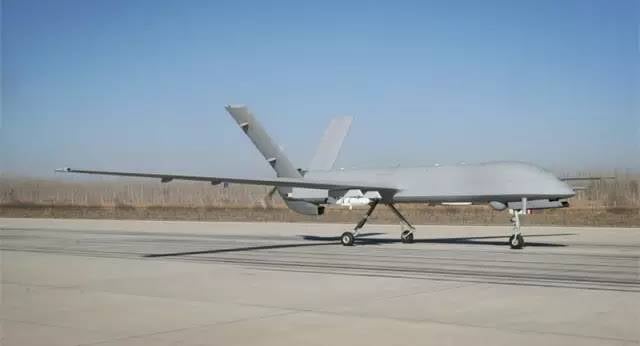
The device, in its configuration reminiscent of the American Predator and Reaper UAVs, is equipped with a ventral gyro-stabilized optoelectronic system with a laser rangefinder-target designator, and in the strike version can carry aviation means of destruction, placed on four pylons under the wing. The reconnaissance variant was designated CH-4A, while the strike variant is known as CH-4B. Since a drone with guided missiles and guided bombs with a total mass of up to 345 kg has more drag and a reduced fuel supply, its flight duration is approximately 40% shorter.
Since 2014, the CH-4 UAV has been exported. With a drone price of about $ 4 million, the buyers of CH-4А / В are Algeria, Jordan, Iraq, Pakistan, Turkmenistan, Myanmar, the United Arab Emirates and Saudi Arabia.
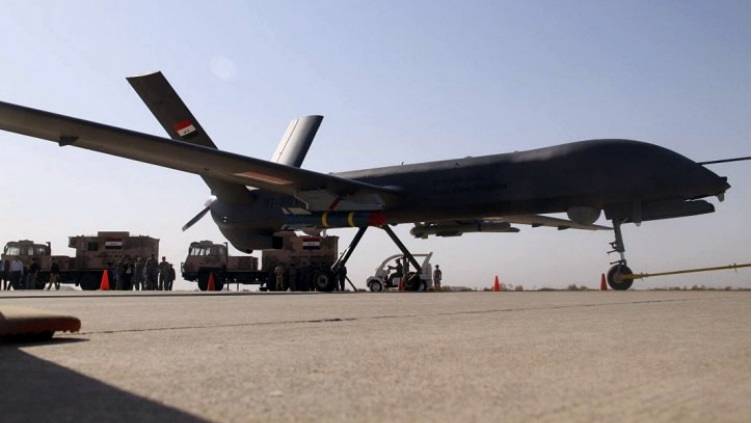
In January 2015, Chinese-made drones deployed at Kut airbase were shown on Iraqi television. Ground control stations are also located here. Foreign publications write that, like in Nigeria, Chinese specialists are engaged in the management and maintenance of drones. One control station is capable of simultaneously controlling up to three drones.
Apparently, the UAV SN-4V operate in Iraq quite effectively. According to data voiced by the representative of the Ministry of Defense of Iraq, since January 2015 of the year they have completed more than 300 sorties, almost all of which have been successful. Also, Chinese-made UAVs belonging to the UAE and Saudi Arabia were used in Yemen. UAVs operated from Sharur and Jizan air bases.
At the beginning of the 2018, the South China Morning Post reported that CASC exported thirty CH-4Bs in batch deals totaling $ 700 million. The manufacturer stated that the drones made more than a thousand sorties with an average duration of 10 h and fired over 400 missiles, hitting their targets with 0,95 probability. In August 2018, it became known that the Husites opposing the Arab Coalition shot down the Saudi UAV SN-4V.
Despite the fact that the Chinese drones CH-4 in their characteristics roughly correspond to the MQ-1 Predator UAVs taken out of service in the United States and are much inferior to the MQ-9 Reaper, many countries show interest in Chinese strike reconnaissance drones. This is due to the fact that the US authorities impose serious restrictions on the supply of combat drones and control systems, and even the closest US allies cannot always acquire them. Given that Russia is not able to offer anything in this segment, Chinese-made unmanned vehicles, the cost of which is relatively low, were out of competition.
The improvement and production of UAVs of the CH-4 family continues. In January 2015, an upgraded version of an unmanned aerial vehicle designated as Tian Yi was recorded at an airfield in the vicinity of Chengdu.
Google Earth satellite image: CH-4 UAV next to other CASC products at the Chengdu factory airfield, image taken in 2015 year
According to foreign Internet sources, the UAV received two compact engines instead of one. At the same time, the dimensions of the updated Tian Yi have not changed. At the same time, the device is distinguished by a new tail unit and nose, as well as a wider air intake. Foreign experts suggest that in this way it was possible to reduce the thermal visibility of the drone and increase flight safety.
In March 2018, it became known that CASC began testing a new modification. Judging by the published images, the CH-4С is capable of carrying side-view radars, and is equipped with a more advanced sighting and surveillance system.
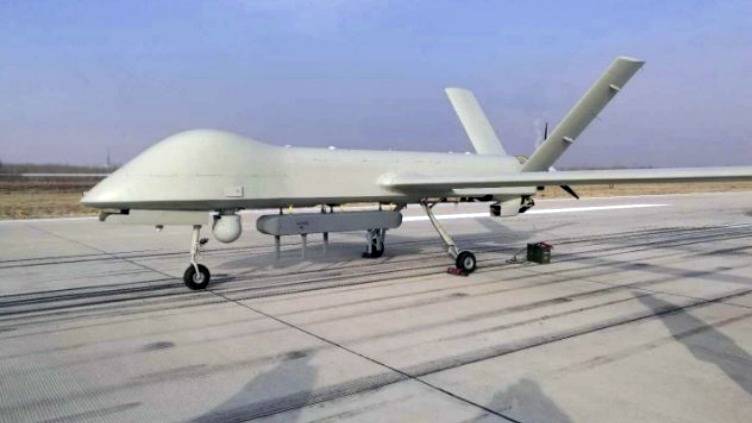
It is reported that on the CH-4С a new engine of increased power and an energy generator of increased productivity are installed. The glider’s strength has also been increased, which makes it possible to suspend aircraft ammunition weighing up to 100 kg, and the total weight of the combat load has been brought up to 450 kg. Taking into account the criticism of the CH-4A and CH-4В models, the CH-4С modification apparatus can be controlled via satellite communication channels, which significantly increases the real range.
Already at the development stage, it was clear that the SN-4 UAV for equipping the PLA could only be an interim solution. This device at a relatively low cost, which amounted to about $ 2 million, has a good export potential, but cannot be considered as a promising platform. The main disadvantages of the serial SN-4 are the lack of the ability to control and transmit information via satellite channels, the relatively low flight speed and altitude, as well as the low altitude and flight speed for an apparatus of this class, which is primarily determined by the use of a piston engine. In this regard, even before the SN-4 UAV was adopted for service at the 11 Institute of the CASC Corporation in 2008, the development of a more advanced UAV began. The construction of the first model began in the 2011 year. The unmanned aerial vehicle CH-5 made its first flight in the year 2016.
In November 2016 at the air show held in Zhuhai, the CH-5 UAV was demonstrated, which many observers called the analogue of the American MQ-9 Reaper. However, the first serial modification was equipped with a piston engine with 300 horsepower, which limits the maximum flight speed to 310 km / h. Cruising speed - 180-210 km \ h. Wingspan - 21 m, glider length - 11 m. Take-off weight - 3300 kg. Payload weight - 1200 kg. The maximum flight height is 7000 m. The drone can be in the air for more than 36 hours. When working with a ground station over the air, the range is 250 km. To control the SN-5, the same ground stations can be used as for the UAV СН-3 and СН-4. In the case of using satellite control equipment (SATCOM), the range increases to 2000 km.
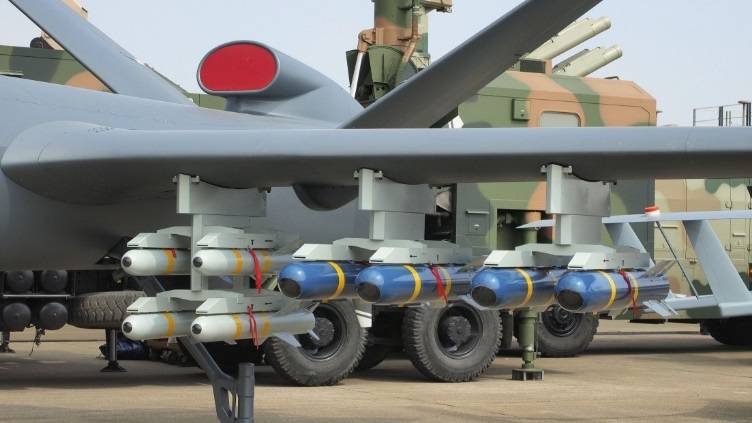
Mock-ups of guided missiles AR-1 and AR-2 with a total number of 16 units were suspended from a sample presented in Zhuhai. The promising compact laser-guided ATGM AR-2 weighs about 20 kg, the weight of the warhead is 5 kg, and the maximum firing range is 8 km. Altogether, on six underwing nodes, 24 AR-2 missiles can be placed. Military experts point out that in the case of suspension under the fuselage of the CH-5 UAV radar station or electronic intelligence equipment, he will be able to use anti-ship and anti-radar missiles.
According to Chinese data, the SN-5 UAV has been adopted and is being mass-produced. The export value is about $ 11 million, which is approximately 6 million cheaper than the price of the American MQ-9 Reaper. However, the Chinese apparatus with a piston engine is inferior to the Reaper in terms of speed and altitude, which greatly depreciates the achievements of Chinese designers. In this regard, in the near future we should expect the appearance of a new modification of the Chinese UAV with a theater.
Another analogue of the American “Predator” is the Wing Loong UAV from AVIC Corporation, also known under the export designation Pterodactyl I. Although a number of UAVs of this type are operated by the PLA Air Force, this model is mainly produced for export. According to Western experts, Pterodactyl is an adapted copy of the American MQ-1 Predator. According to Chinese designers, this drone is a completely independent development.
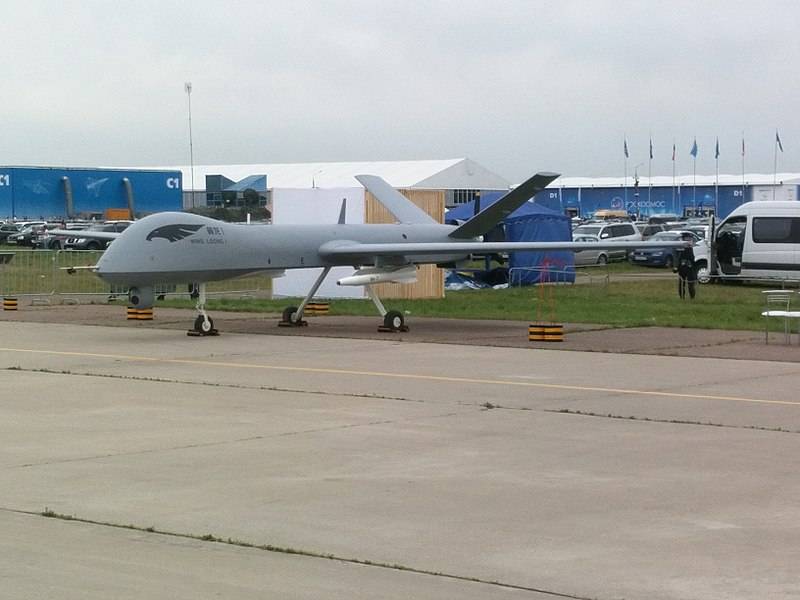
Wing Loong UAV is made according to the mid-wing scheme with wings of large elongation. The tail is a single V-shaped stabilizer pointing up from the fuselage (unlike the MQ-1 Predator, in which it is pointing down). The engine is located at the rear of the fuselage. It drives a three-blade pushing screw with a variable pitch of the blades. In the nose of the fuselage under the bottom there is a spherical block of optoelectronic equipment designed for round-the-clock monitoring of the situation in a given area, searching for targets and issuing target designation. The 1100 kg take-off device is equipped with a 100 hp piston engine. and is capable of carrying a payload of up to 200 kg. Wingspan - 14 m, length - 9,05 m. Maximum speed - 280 km / h, patrol speed 150-180 km / h. Practical ceiling - 5 000 meters. The Pterodactyl armament, depending on the preferences of the client, may include various guided aircraft ammunition weighing up to 120 kg.
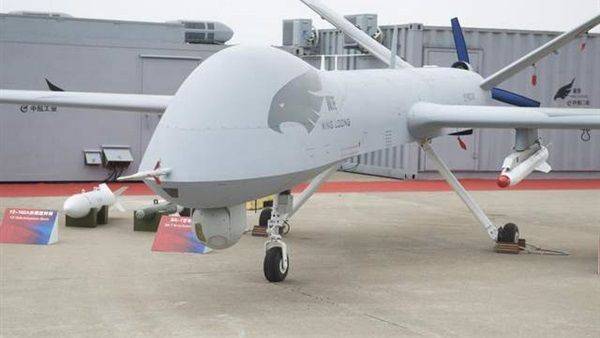
The UAV’s arsenal includes 50-100 kg caliber bombs: FT 10, FT 7, YZ 212D, LS 6, CS / BBM1 and GB4, small-sized guided air-to-ground missiles of the AG 300M, AG 300UM, Blue Arnumxl, Blue Arnumxl type CM 7KG, GAM 502A / B. The armament is located on four underwing pylons (101 kg of load on the external pylons and 75 kg on the internal).
The first UAV flight Wing Loong made in 2007, in 2013, the Chinese TV channel CCTV 13 showed a story about the serial assembly of Pterodactyl I in the Chengdu Aircraft Industry Group workshop (a division of the AVIC aviation industrial corporation). With an export value of about $ 1 million, Pterodactyl is popular with foreign buyers. Currently, the devices of this model are purchased by: Egypt, Indonesia, Kazakhstan, Uzbekistan, Nigeria, Serbia and the United Arab Emirates. According to China National Aero Technology Import & Export Corp, over 2018 UAVs of this type have been exported as of the end of 100.
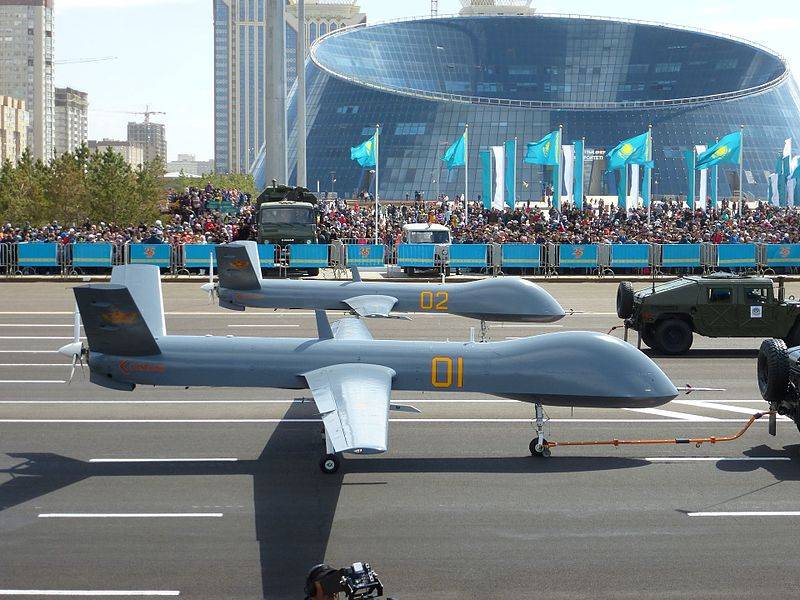
A number of countries have used Pterodactyl I UAVs in combat. In March 2017, the Egyptian Air Force attacked northern Sinai as part of an operation against Islamic militants. Laser guided missiles were aimed at buildings with terrorists hiding in them and moving vehicles. At the same time, 18 militants were killed. UAE drones participated in hostilities in Yemen and Libya. At the same time, at least one Pterodactyl was shot down by anti-aircraft fire in the Libyan Misrat region.
In 2016, at the Airshow China 2016 exhibition, the Wing Loong II UAV was presented to the public. This modification differs from previous versions of the take-off weight increased to 4 200 kilograms, large dimensions and flight duration increased to 32 hours. The UAV is capable of flying at a speed of 370 km / h at an altitude of up to 9000 m.
The layout of the device is similar to the previous model, but has become noticeably larger. The wing span increased almost one and a half times (up to 20,5 m), and take-off weight increased 3,5 times. According to official information, the new drone has an optimized aerodynamic layout, improved airframe design and modified on-board systems, as well as a more powerful turboprop engine. In addition to improving flight performance, Wing Loong II has an expanded set of optoelectronic and radio systems and an increased combat load. The mass of weapons placed on six underwing suspension points increased to 480 kg, and guided aerial bombs of GB3 caliber 250 kg with laser guidance were introduced into the ammunition.
In 2017, Saudi Arabia entered into a $ 10 billion deal for its own production of 300 Wing Loong II. The Pakistan Aircraft Corporation also plans to jointly with AVIC assemble the 48 Wing Loong II.
Thus, it can be stated that Chinese developers managed to minimize the backlog from the United States in creating medium-sized shock reconnaissance unmanned vehicles. At the same time, the cost of UAVs manufactured in China is significantly lower than that of analogues produced in other countries. In this regard, it can be expected that Chinese drones capable of carrying a combat load will dominate the international market in the near future. A report published by SIPRI states that China is between 2008 and 2018. delivered 163 mid-range multipurpose UAVs in thirteen countries. During the same time period, the United States exported fifteen MQ-9. U.S. arms manufacturers complain that if things go this far, their Chinese rivals will dominate.
To be continued ...
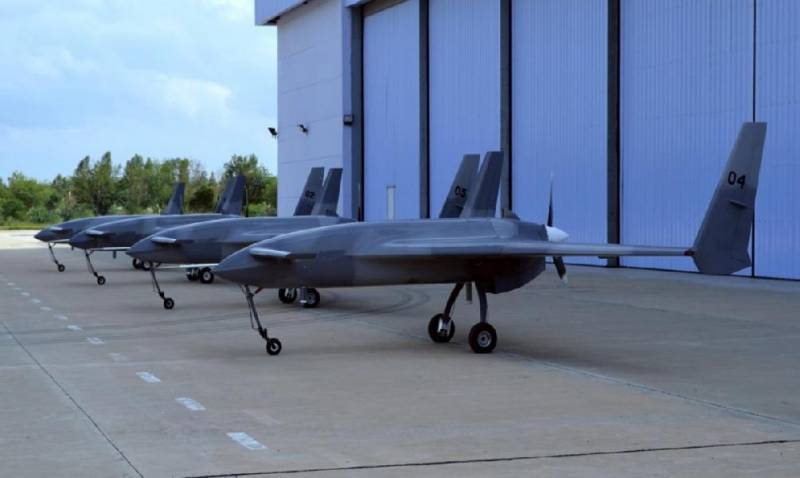
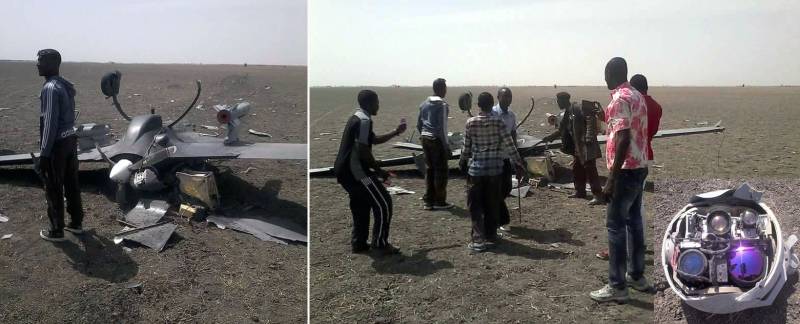
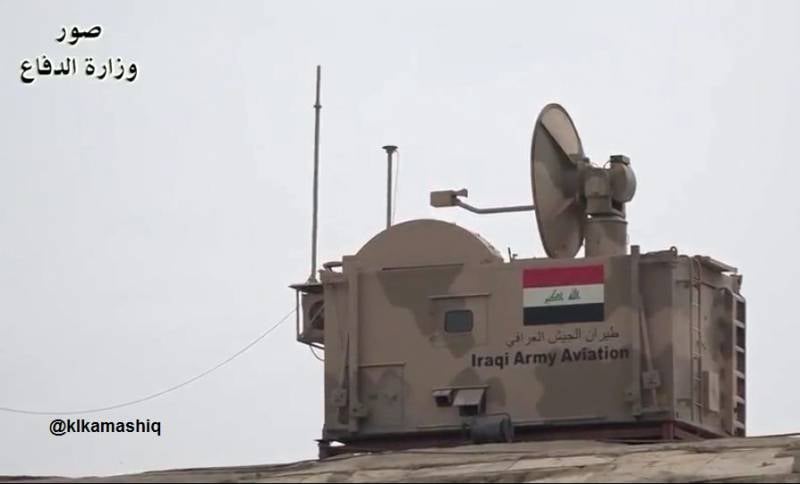
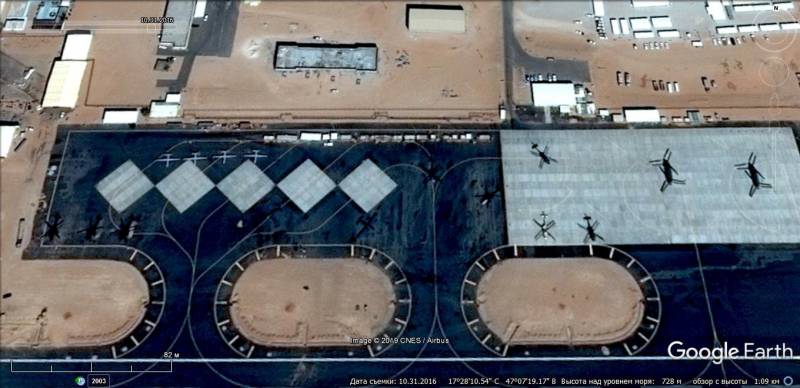
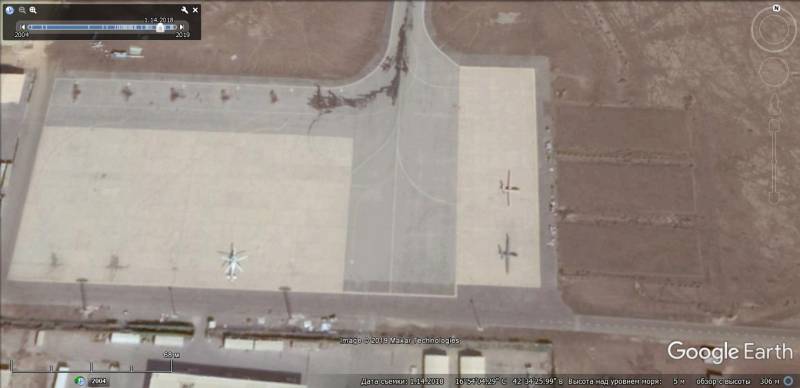

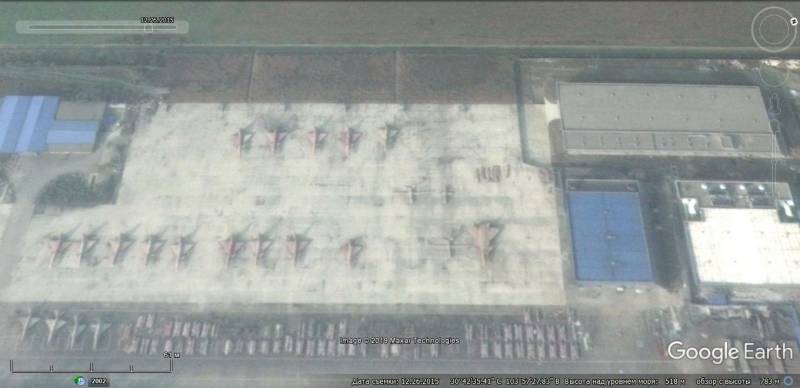
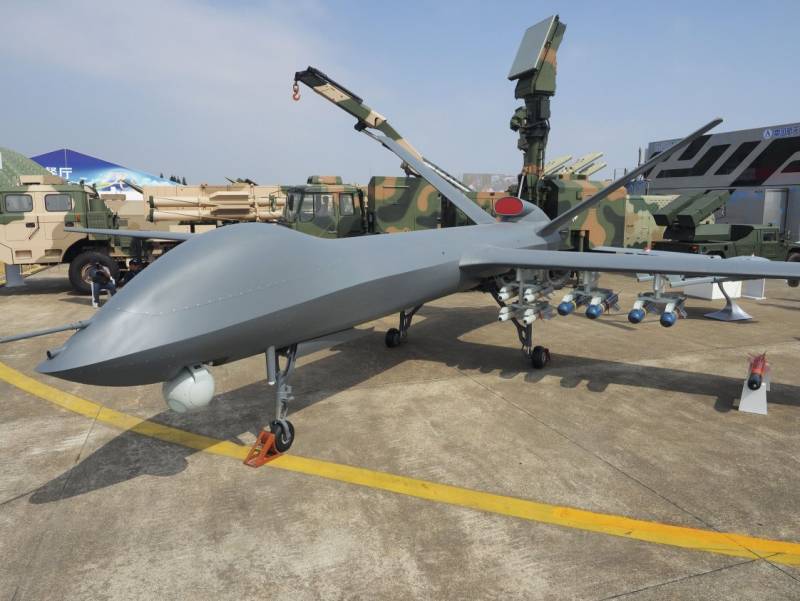
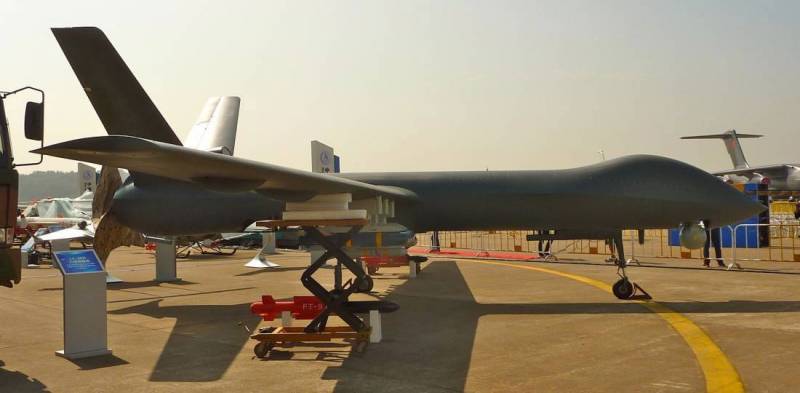
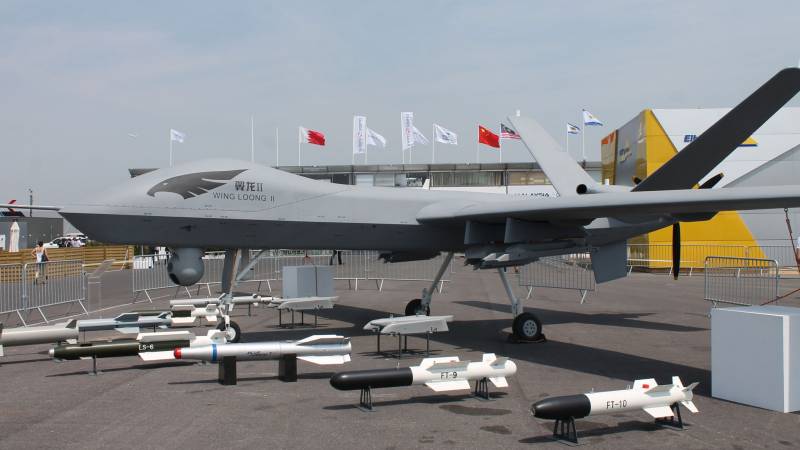
Information